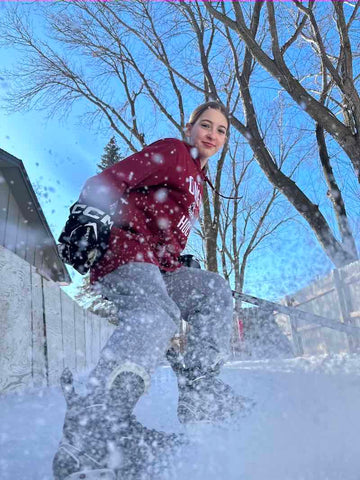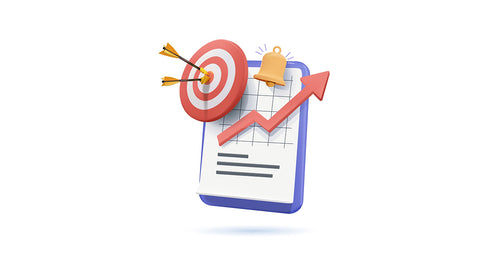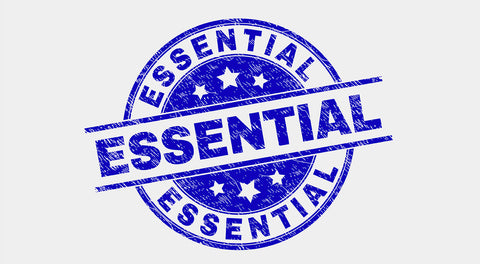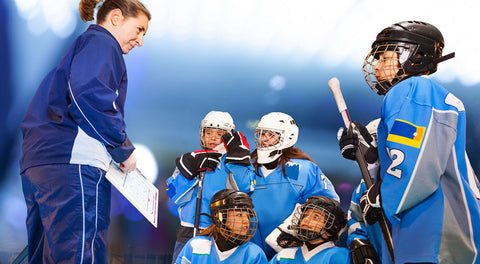10 Best Off Ice Training Tips to Improve Your Hockey SKills
Importance of Off-Ice Training
Off-ice training is a crucial aspect of a hockey player's development and overall performance.
This type of training allows players to improve their physical fitness, skills, and mental focus away from the rink.
By incorporating off-ice exercises into their regular routine, hockey players can enhance their on-ice performance and reduce the risk of injury.
Get The Ultimate Off Ice Training Tool: The Original Synthetic Ice Tile Developed By PolyGlide Ice!

Key Components of Off-Ice Training
Off-ice training encompasses various components, each targeting specific aspects of a hockey player's performance.
These components include:
1. Flexibility and Mobility
Improving flexibility and mobility is essential for reducing the risk of injury and increasing a player's range of motion on the ice.
Flexibility exercises such as dynamic stretching, yoga, and foam rolling can help hockey players loosen up tight muscles and improve their mobility.
2. Strength and Conditioning
Strength and conditioning exercises help build a solid foundation for power, speed, and agility.
Incorporating exercises like squats, lunges, and core workouts will help players build the necessary muscle strength to compete at a high level.
3. Speed and Agility
Speed and agility are critical for a hockey player's on-ice performance.
By incorporating plyometrics, sprinting drills, and agility exercises, players can improve their quickness, acceleration, and overall maneuverability on the ice.
4. Endurance and Stamina
Endurance and stamina are necessary for maintaining high levels of performance throughout a game.
Aerobic exercises like running, cycling, and swimming can help players build their cardiovascular fitness and improve their overall endurance.
5. Balance and Coordination
Balance and coordination are essential for maintaining control on the ice.
Off-ice exercises such as single-leg balance drills, core stability exercises, and hand-eye coordination drills can help hockey players develop these vital skills.
6. Mental Training and Focus
Developing mental toughness and focus is critical for success in hockey.
Incorporating techniques such as visualization, goal setting, and mindfulness can help players improve their mental game and perform at their best under pressure.

Designing an Off-Ice Training Program
7. Assessing Your Needs
Before designing an off-ice training program, it's essential to assess your current fitness level, strengths, and weaknesses.
Consider consulting with a coach or personal trainer to help identify areas of improvement and create a customized training plan.
8. Creating a Balanced Program
A well-rounded off-ice training program should address all the key components mentioned above.
Be sure to include exercises that target flexibility, strength, speed, endurance, balance, and mental training in your routine.
9. Setting Goals and Tracking Progress
Establishing clear goals and tracking your progress is essential for staying motivated and seeing improvements.
Set short-term and long-term goals for your off-ice training, and monitor your progress regularly to ensure you're on track to achieve them.

Essential Off-Ice Training Exercises
10. Top Exercises for Each Key Component
To help you get started with your off-ice training, here are some top exercises for each key component:
- Flexibility and Mobility: Dynamic stretching, yoga poses, and foam rolling
- Strength and Conditioning: Squats, lunges, push-ups, and core exercises
- Speed and Agility: Plyometrics, sprinting drills, and agility ladder workouts
- Endurance and Stamina: Running, cycling, swimming, and interval training
- Balance and Coordination: Single-leg balance drills, core stability exercises, and hand-eye coordination drills
- Mental Training and Focus: Visualization exercises, goal setting, and mindfulness practice

Integrating Off-Ice Training with On-Ice Performance
Translating Skills to the Ice
To ensure your off-ice training translates to on-ice performance, it's essential to practice the skills you've developed during your off-ice sessions.
This might involve working on your skating technique, shooting accuracy, or puck-handling skills during on-ice practices.
Monitoring Progress and Making Adjustments
Regularly evaluate your on-ice performance and assess whether your off-ice training is positively impacting your game.
If needed, make adjustments to your off-ice training program to better target specific areas of improvement.
Get The Ultimate Off Ice Training Tool: The Original Synthetic Ice Tile Developed By PolyGlide!
Conclusion
Off-ice training is a critical component of a hockey player's development and success.
By focusing on key components such as flexibility, strength, speed, endurance, balance, and mental training, players can improve their overall performance and reduce the risk of injury.
Creating a balanced off-ice training program, setting goals, and tracking progress are essential for maximizing the benefits of this type of training.
Remember to regularly evaluate your on-ice performance and make adjustments to your off-ice training as needed.

Off Ice Hockey Training FAQs
- How often should I engage in off-ice training?
A well-balanced off-ice training program should be incorporated into your routine 3-4 times per week. However, this may vary depending on your specific needs, goals, and hockey season schedule.
- Can off-ice training help prevent injuries?
Yes, off-ice training can help reduce the risk of injury by improving your overall physical fitness, flexibility, and mobility. This helps players maintain better control on the ice and reduces the likelihood of injury.
- How long should an off-ice training session last?
An effective off-ice training session should last between 45 minutes to an hour. This allows for sufficient time to address each key component of off-ice training while preventing overtraining.
- Can off-ice training improve my skating skills?
While off-ice training can't directly improve your skating technique, it can help develop the physical attributes necessary for better skating, such as strength, speed, agility, and balance.
- Should I consult with a coach or personal trainer to design my off-ice training program?
While not mandatory, consulting with a coach or personal trainer can be beneficial for creating a customized off-ice training program tailored to your specific needs, strengths, and weaknesses. This can help ensure that your training program effectively addresses your individual goals and helps you progress as a hockey player.




